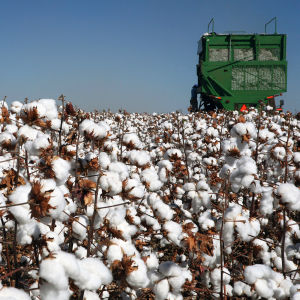Forty-five years ago, in 1970, Professor D. Gale Johnson published what became a seminal work on agricultural policy. For his title, Professor Johnson settled on the phrase World Agriculture in Disarray to reflect the chaotic incentives and economic inefficiencies created by the agricultural policies of many countries, including Australia, Canada, the European Union, Japan, New Zealand and the United States.
Some of those countries have since abandoned extensive supply control, price support, farm income payments and other forms of intervention. Not surprisingly, in those countries, farmers have generally become more entrepreneurial and economically efficient, and agricultural productivity has improved at a faster rate than in other countries whose programs have sustained inefficient farms and reduced incentives for innovation.
In this context, Australia and New Zealand, where most farm subsidy programs were terminated in the 1980s, are prime examples of the benefits for agricultural productivity of ending farm programs. Other countries have made some changes or moved towards terminating their subsidy programs but only at a grindingly slow pace. The European Union falls into the former and Japan into the latter category. In the Canadian Provinces that continue to “control” the supply of dairy products and eggs, many dairy and poultry farms tend to be inefficient and prices for milk and other dairy products unnecessarily high.
So what about the United States? While the US appeared to be moving away from subsidies that distorted agricultural markets in the early and mid-1990s, since then the House and Senate agricultural committees have been allowed to make a 180-degree turn. And in many ways the 2014 Farm Bill has only made matters worse.
One example is the US Federal Crop Insurance program, which is to be continued and expanded. In the 1980s, annual government spending on that program was considerably less than a billion dollars a year, but now the program directs an annual average of about $8.5 billion in subsidies to farmers and crop insurance companies.
The federal crop insurance program unequivocally distorts production incentives, encourages the expansion of crop production on environmentally-sensitive lands, and discourages the innovation and adoption of private sector risk management technologies and strategies. At the same time, the program mainly benefits the wealthiest 15 percent of farm operations, who receive over 80 percent of the subsidies paid out under the program.
The brand new dairy margin protection income support program for US dairy farmers is another example. It guarantees that most milk producers will almost certainly receive revenues in excess of their costs. Any dairy farm can sign up at almost no cost for access to modest subsidies. However, the program’s structure is so poor that milk producers can make pretty good guesses about whether the program will provide them with large payouts in any given year and then, by paying heavily-subsidized premiums, sign up for higher coverage levels. By guaranteeing profits for many inefficient operations using outmoded technologies, the program is likely to do nothing good for the US dairy processing industry’s long-run competitiveness in global dairy product markets. And it could well cost taxpayers as much as four or five billion dollars in some years.
Then there is the Stacked Income Protection program for cotton known as STAX. The STAX program enables cotton producers to purchase a kind of insurance for every acre of cotton they plant that, in effect, protects them against both price decreases and yield losses in their counties.
The production and market distortions associated with the STAX program are substantial. The taxpayer is on the hook for all administration costs and eighty percent of the payments that cotton farmers will receive for “losses.” Further, in North Texas, and some other parts of the country, cotton is raised on fragile lands. So, in addition to directing most of the STAX subsidies to the largest and wealthiest cotton operations, the program also encourages cotton farmers to expand production in areas where the environmental damage they may cause is relatively severe.
While Professor Johnson would and, before he passed away in 2003, did applaud the agricultural policy reforms implemented in Australia and New Zealand in the 1980s, and in the European Union in the 1990s, he would almost surely see no reason to view the 2014 Farm Bill as anything but a policy disaster. Agricultural programs in the United States continue to be a prime contributor to the policy disarray about which Professor Johnson wrote so eloquently in 1970.

